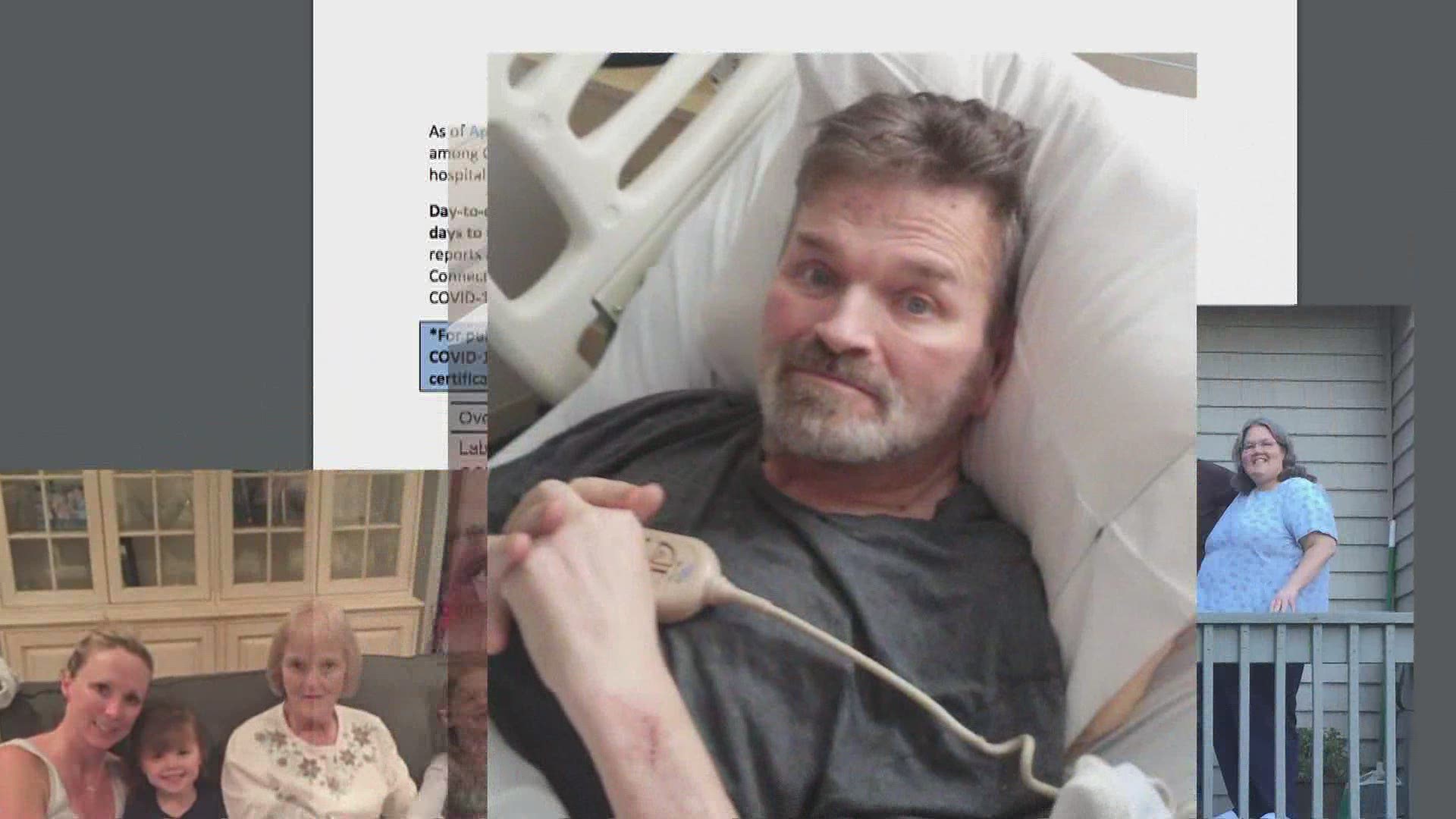We are getting our first look at detailed data on nursing home-specific infections, and it’s shocking. But let’s be clear...the nature of data is numbers. However, it is important to remember behind each number is a person and behind each person is a family.
Nursing home-specific infection data has been compiled by the state and will be updated every Thursday. The Coronavirus has infiltrated 50% of our state’s nursing homes. Nursing home deaths account for nearly 40% of the total COVID-19 deaths in CT. It preys on the elderly and those with underlying health problems. "That’s Connecticut’s nursing home population," said Matthew Barrett, the President of the Connecticut Association of Healthcare Facilities.
Here is a sampling of the biggest nursing home outbreaks.
-Abbott Terrace Health Center, Waterbury, 69 cases 15 deaths
-Golden Hill, Milford, 67 cases 9 deaths
-Grimes Center, New Haven, 58 cases 1 death
-The Willows, Woodbridge, 43 cases 9 deaths
-Gardner Heights Healthcare, Shelton 42 cases 15 deaths
-Apple Shelton Lakes, Shelton, 40 cases 13 deaths
You’ll notice they are all located in either Fairfield or New Haven County. But it's not necessarily a reflection of the quality of care being provided there. "The work that’s being done within the nursing homes had been really heroic and courageous," said Mag Morelli, the President of Leading Age Connecticut.
But noticeably absent from the data are the infections of nursing home staff. The experts say it’s an important metric that needs to be tracked. The Connecticut Association of Healthcare Facilities represents 145 skilled nursing facilities in the state. Leading Age Connecticut represents 35 non-profit homes. They both sounded the alarm on staff shortages.
"When you see high incidents of COVID it should raise a red flag. Is this nursing facility having staffing issues?" said Barrett.
"We try with the PPE but staff are falling ill and so we are seeing the shortages from people falling and from people who need to be put into isolation just because they’ve been exposed," added Morelli.
A mutual aid system will track and identify where staff shortages occur, but it doesn’t always make extra staff available.
"We’ve had staffing shortages for at least a year and so it’s just considerably exasperated maybe to the crisis level frankly," said Barrett.
So what else does the data tell us? It tells us we didn’t know what we didn’t know. It tells us that despite early visitation restrictions, infection control procedures and temperature taking, we know now that the virus can be transmitted before symptoms occur.
"The science and the learning has changed," said Barrett.
The invisible enemy has penetrated into the population through asymptomatic visitors and staff, many of whom work multiple jobs at multiple homes. Right now, it’s a best practice to keep staff from moving around.
"Many employees have chosen to just remain working in one facility," said Morelli.
But it’s not an executive mandate. Should it be?
"We haven’t really figured out a way to create a ban on working in any other facilities." said Barrett.
It's too soon to draw conclusions but the fight for life goes on amid worker protests for PPE and COVID recovery homes beginning to open.
These experts told FOX61 they knew these infection control measures are hard on families. It’s tough medicine. But they say the consequences for loosening restrictions right now are even more severe.
Below is a complete list of nursing homes data:

